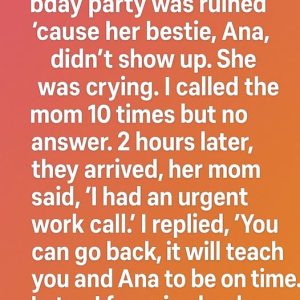Paul was known at work as the quiet man with the same plain lunch every day: a sandwich, nothing more. Coworkers joked about it lightly, never imagining there was a reason behind the simplicity. He rarely spoke about himself, never shared personal details, and lived in a rhythm others assumed was simply dull or habitual. When he resigned and accepted help clearing out his desk, a discovery shifted everything. Inside a drawer sat a thick bundle of children’s drawings tied with a rubber band. The images revealed stick-figure kids, hearts, and phrases like “Thank you Mr. Paul.” One drawing in particular showed a man handing out sandwiches to children lined up beside him. Seeing these drawings stunned the narrator, raising questions about a side of Paul that no one had known existed.
Confused but intrigued, the narrator asked Paul about the drawings. Instead of explaining directly, Paul simply posed a question: had he ever been to the West End Library around 6 p.m.? He suggested stopping by sometime, hinting that the answer would become clear. Days later, driven by curiosity and an unresolved sense of wonder, the narrator went to the library. There, near the side entrance, Paul stood with a cooler and stacks of brown paper bags. About fifteen children waited quietly in line—kids who looked hungry, worn down, or simply overlooked by the world. Paul handed out sandwiches with gentle words, never boasting or seeking attention, moving with a quiet dedication that contrasted sharply with his reserved office demeanor. When approached, he explained that he started doing this because many of the kids didn’t get dinner, and he wanted to ensure they had at least one dependable meal each day.
The narrator soon learned that Paul’s daily sandwich at work wasn’t just his lunch—it was part of his routine to stay consistent when preparing the same meal for the kids. Every morning he made identical peanut butter and jelly sandwiches, choosing something reliable, simple, and universally comforting. The narrator felt guilty about the teasing now, realizing those sandwiches represented far more than personal habit. Soon, the narrator began helping after work, and although the two didn’t talk much initially, their shared effort created a quiet bond. One day, while preparing sandwiches in Paul’s modest apartment, the narrator finally asked him why he started doing this. In a soft voice, Paul revealed he grew up in foster care, often going hungry, and knew the pain of being “hungry and invisible.” His service wasn’t charity—it was a way of healing wounds that never fully disappeared.
Then one week Paul didn’t appear at the library. Calls went unanswered. The narrator waited with the prepared lunch bags, but the kids kept asking, “Where’s Mr. Sandwich Man?” Days later a call came from the hospital—Paul had collapsed from stress and exhaustion, and the narrator, unexpectedly listed as his emergency contact, was notified. Visiting him revealed just how worn down he was. Despite his condition, Paul greeted the narrator with a joke about sandwiches, still thinking of the kids before himself. When told that the sandwiches had been provided in his absence, he squeezed the narrator’s hand and asked for one promise: to keep the routine going until he recovered. The narrator agreed, understanding now that this commitment mattered deeply, not just to Paul but to the children who depended on him.
Weeks passed, and the narrator continued the routine alone. Coworkers began noticing the hurried exits each day and eventually learned what was happening. Instead of reacting with surprise alone, they joined in. What began as Paul’s quiet, solitary act transformed into a workplace movement. Every Friday, employees gathered in the break room to make sandwiches together, turning the effort into something communal and heartfelt. They called it “Sandwich Fridays,” even adding cheerful stickers to the bags—a cartoon sandwich in a superhero cape. The workplace, once indifferent to Paul’s lunches, now embraced the purpose behind them. People who had once laughed at his plain meals were now actively carrying forward his mission.
When Paul recovered, he chose not to return to office work. Instead, he took the movement further by launching a nonprofit called One Meal Ahead. The name came from advice his foster dad once gave him: “You don’t need a full plan, kid. Just be one meal ahead of the worst day.” The organization grew, and some of the children he once fed continued to remember him years later. One young man, Marcus, explained that Paul didn’t try to fix every part of their lives—he just ensured they weren’t starving, and sometimes that was the lifeline they needed. His impact wasn’t loud or glamorous; it was steady, reliable, and rooted in genuine compassion.
Reflecting on it all, the narrator often recalls how everyone once saw Paul’s routine as boring or strange, never imagining the quiet miracle behind it. He proved that heroism isn’t always dramatic or visible. Sometimes it comes in the form of a simple sandwich delivered with consistency and kindness. His story is a reminder that small acts matter deeply, especially when done without expectation of praise. Through his quiet dedication, Paul showed that making the world better doesn’t always require grand gestures—sometimes it takes only a brown bag, a steady hand, and a heart determined not to let others feel the hunger he once knew too well.





